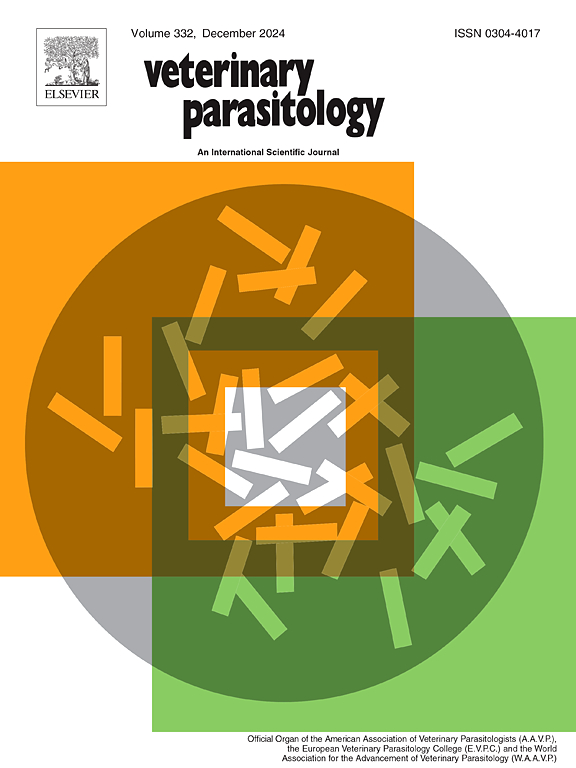Comparison of in vitro and in vivo resurrection success of three ovine gastrointestinal nematode species following different cryopreservation strategies
IF 2
2区 农林科学
Q2 PARASITOLOGY
引用次数: 0
Abstract
Nematode infective larvae (L3) of veterinary importance have been cryopreserved in liquid nitrogen (LN2) to minimize the need for continued passage through live animals. Health and safety concerns, combined with increasing pressures to reduce running and maintenance costs have driven the need to explore alternative preservation techniques. Super-cold (-150°C) freezers have been used for long term storage of cell lines, but no published data were available for livestock gastro-intestinal nematodes (GIN). In vitro and in vivo survivability of L3 of three GIN species (Teladorsagia circumcincta (MTci2), Trichostrongylus colubriformis (MTco1) and Haemonchus contortus (MHco3 and MHco18)) were assessed following three cryopreservation storage methods. In brief, fifty thousand larvae were exsheathed, and cryopreserved using one of three methods; either snap frozen in LN2 before storage at −150 °C (LN/-150°C); stored directly at −150°C or stored in LN2 (LN). In vitro survivability of L3 (dead versus alive) were assessed at approximately 1, 2, 4, 6, 11 and 23 months post −150°C and LN/-150°C storage. Larvae were defrosted and left in PBS overnight at 39.6°C and 10 % CO2 prior to dead/alive assessment. An in vivo study was undertaken with L3 following 4 months of storage. The tubes stored directly in −150°C have consistently shown ≥ 90 % in vitro survivability for all isolates, whereas LN/−150°C showed inter species variability (range: 7–63 % survivability). The in vivo assessment demonstrated a significant difference in establishment with overall group mean establishment ranging from 9 % in the LN/−150°C to 62 % of the fresh larvae, with the −150°C and LN groups establishing 25 % and 10 % respectively.
求助全文
约1分钟内获得全文
求助全文
来源期刊

Veterinary parasitology
农林科学-寄生虫学
CiteScore
5.30
自引率
7.70%
发文量
126
审稿时长
36 days
期刊介绍:
The journal Veterinary Parasitology has an open access mirror journal,Veterinary Parasitology: X, sharing the same aims and scope, editorial team, submission system and rigorous peer review.
This journal is concerned with those aspects of helminthology, protozoology and entomology which are of interest to animal health investigators, veterinary practitioners and others with a special interest in parasitology. Papers of the highest quality dealing with all aspects of disease prevention, pathology, treatment, epidemiology, and control of parasites in all domesticated animals, fall within the scope of the journal. Papers of geographically limited (local) interest which are not of interest to an international audience will not be accepted. Authors who submit papers based on local data will need to indicate why their paper is relevant to a broader readership.
Parasitological studies on laboratory animals fall within the scope of the journal only if they provide a reasonably close model of a disease of domestic animals. Additionally the journal will consider papers relating to wildlife species where they may act as disease reservoirs to domestic animals, or as a zoonotic reservoir. Case studies considered to be unique or of specific interest to the journal, will also be considered on occasions at the Editors'' discretion. Papers dealing exclusively with the taxonomy of parasites do not fall within the scope of the journal.
 求助内容:
求助内容: 应助结果提醒方式:
应助结果提醒方式:


